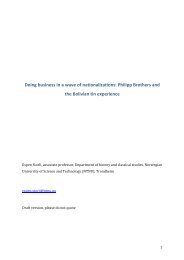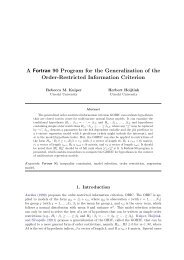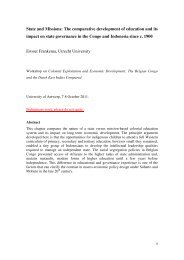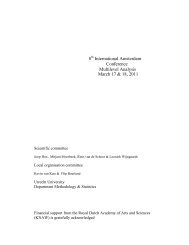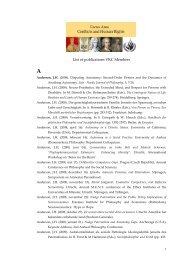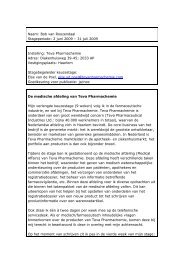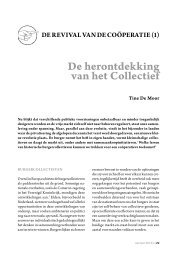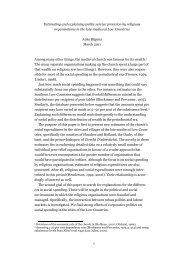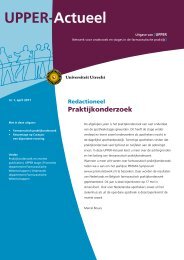New Approaches to Medieval Communication?1
New Approaches to Medieval Communication?1
New Approaches to Medieval Communication?1
Create successful ePaper yourself
Turn your PDF publications into a flip-book with our unique Google optimized e-Paper software.
22 MARCO MOSTERTguage. No human society is known <strong>to</strong> do without one, and we can hardly imaginehow a group of humans could accomplish any but the simplest acts in itsabsence. How could one, without language, profit from the experience of others,let the others know one’s plans, or organize the tasks <strong>to</strong> be performed?<strong>Medieval</strong> societies, <strong>to</strong>o, obviously attached great importance <strong>to</strong> verbal communication,and it is no coincidence that many studies of medieval communicationare devoted <strong>to</strong> the spoken and written word.Audible and visible media are extremely suitable for group use. The lightperceived by the eye and the vibrations of the air captured by the ear may be‘received’ over relatively long distances. Whereas smell, taste and <strong>to</strong>uch demandthe immediate vicinity of sender and receiver, these constraints are absentin the case of sound and vision. Thus, it is possible <strong>to</strong> communicate withmore people at the same time. No doubt this possibility is one of the reasonswhy one has tried <strong>to</strong> give durability <strong>to</strong> visual and audible signs. Many of thesesigns (for instance gestures or exclamations) disappear, but they can be reencodedin visual images or written texts.The spoken word is privileged by its flexibility and ease of use, but as ameans of communication it is constrained by place and time: a discourse maybe made only at a certain time, at a certain place. Man has learnt <strong>to</strong> controltime and space by systems of coded material traces, such as writing, which callupon the eye. The relationship between writing and other forms of communicationunderwent important changes during the Middle Ages. The developmen<strong>to</strong>f medieval writing has <strong>to</strong> be studied in relation <strong>to</strong> changing social institutions.Writing was (as it still is) organized in social systems of producers and consumersof written texts. These systems interacted with other social systems,and technological innovations in written culture are demanded by practical,social needs. One might even argue that writing itself is also an institution,with its own canons. 21Literacy, orality and the study of the Middle AgesOf all forms of medieval communication, the written word has benefitedmost from scholarly attention. Indeed, the study of communication is unthinkablewithout the study of reading and writing, if only because the ability <strong>to</strong>participate actively in written culture tends <strong>to</strong> colour and change the attitude<strong>to</strong>wards all other forms of communication. The study of written texts is as old21 On literary and other codes, see No. 265, referring <strong>to</strong> B. HERRNSTEIN SMITH,“Contingencies of value”, in: Canons, ed. R. VON HALLBERG (Chicago, 1983), pp. 5-93.



